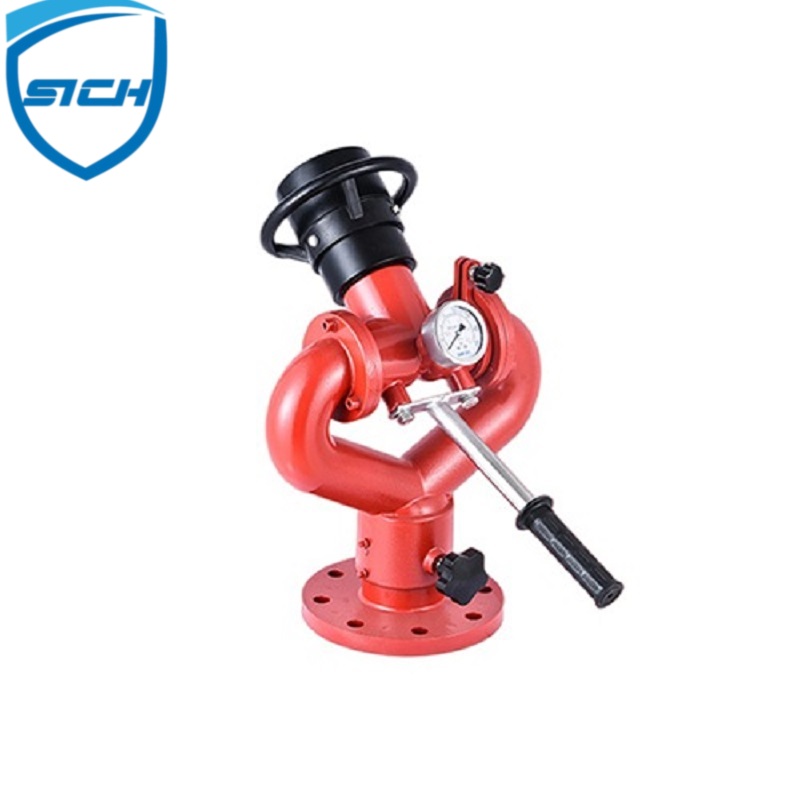Firefighting monitors incorporate various safety features to ensure the safe operation of firefighters during firefighting activities.
Some typical safety features include:
- Pressure Relief Valves: These valves prevent excessive pressure build-up within the system, ensuring that the equipment operates within safe limits and reducing the risk of equipment failure.
- Overload Protection: Systems may include mechanisms to protect against damage caused by excessive loads or sudden pressure surges, safeguarding the equipment and personnel.
- Emergency Shut-Off Controls: Firefighting monitors are equipped with emergency shut-off switches or controls, allowing immediate cessation of water flow in case of emergencies or system malfunctions.
- Anti-Collision Sensors: Some systems incorporate sensors or features to prevent collisions or accidents, particularly in automated or remotely operated systems.
- Manual Override Functions: Operators have the option for manual control in case of system malfunctions or when automated controls fail, allowing immediate intervention to control water discharge.
- Stability and Mounting Measures: Systems are designed with stability features to prevent tipping or instability during operation, ensuring safe positioning and use.
- Weatherproofing and Insulation: Firefighting monitors are often designed to withstand adverse weather conditions and incorporate insulation to prevent electrical hazards.
- Safety Interlocks: These features prevent accidental activation or operation of the system, requiring specific steps or conditions to be met before use.
- Operator Training and Safety Protocols: Comprehensive training for operators and adherence to safety protocols are crucial for safe and effective operation.
- Temperature Monitoring: Monitoring systems track the temperature of critical components, helping prevent overheating or potential hazards in high-temperature environments.
These safety features collectively aim to minimize operational risks, prevent accidents, and ensure the overall safety of firefighters and personnel operating firefighting monitors during firefighting activities. Regular maintenance and adherence to safety guidelines are fundamental for maximizing safety when utilizing these firefighting systems.
How do firefighting monitors contribute to controlling and suppressing fires in different scenarios?
Firefighting monitors play a vital role in controlling and suppressing fires across various scenarios by offering several advantages:
- High-Volume Water Discharge: Monitors can deliver large volumes of water or firefighting agents quickly, enabling rapid fire suppression, particularly in situations where extensive water delivery is needed.
- Long-Range Reach: These systems can project water over long distances, allowing firefighters to maintain a safe distance while effectively targeting the fire, especially in large-scale incidents or hazardous environments.
- Precise Water Direction: Monitors offer precise control over water direction and dispersion, allowing firefighters to target specific areas or hotspots, maximizing firefighting efficiency.
- Rapid Fire Knockdown: By delivering substantial amounts of water rapidly, monitors aid in quickly extinguishing or controlling fires, preventing their spread or escalation.
- Cooling Surfaces and Structures: Water discharge from monitors helps cool down surfaces and structures, reducing the risk of structural collapse and creating safer conditions for firefighting operations.
- Protection and Shielding: Continuous water streams created by monitors can act as protective barriers, shielding entry or exit points and allowing safer navigation for firefighters.
- Assisting Evacuations: Monitors help create safe zones or pathways for evacuations by controlling fire spread, facilitating safer movement for affected individuals and emergency responders.
- Adaptability to Various Scenarios: Monitors can be mounted on firefighting vehicles, fixed installations, or used in portable configurations, fire fighting monitor adapting to different firefighting scenarios such as wildfires, structural fires, or industrial incidents.
- Chemical Agent Dispersal: Some advanced monitors can disperse firefighting foam or other chemical agents, enhancing their capability to combat certain types of fires more effectively.
- Sustained Fire Suppression: Monitors provide continuous water supply for extended periods, contributing to sustained suppression efforts in large-scale or prolonged incidents.
By providing targeted and efficient water delivery, firefighting monitors offer firefighters a powerful tool to combat fires effectively across diverse scenarios, minimizing risks and facilitating more controlled firefighting operations.
